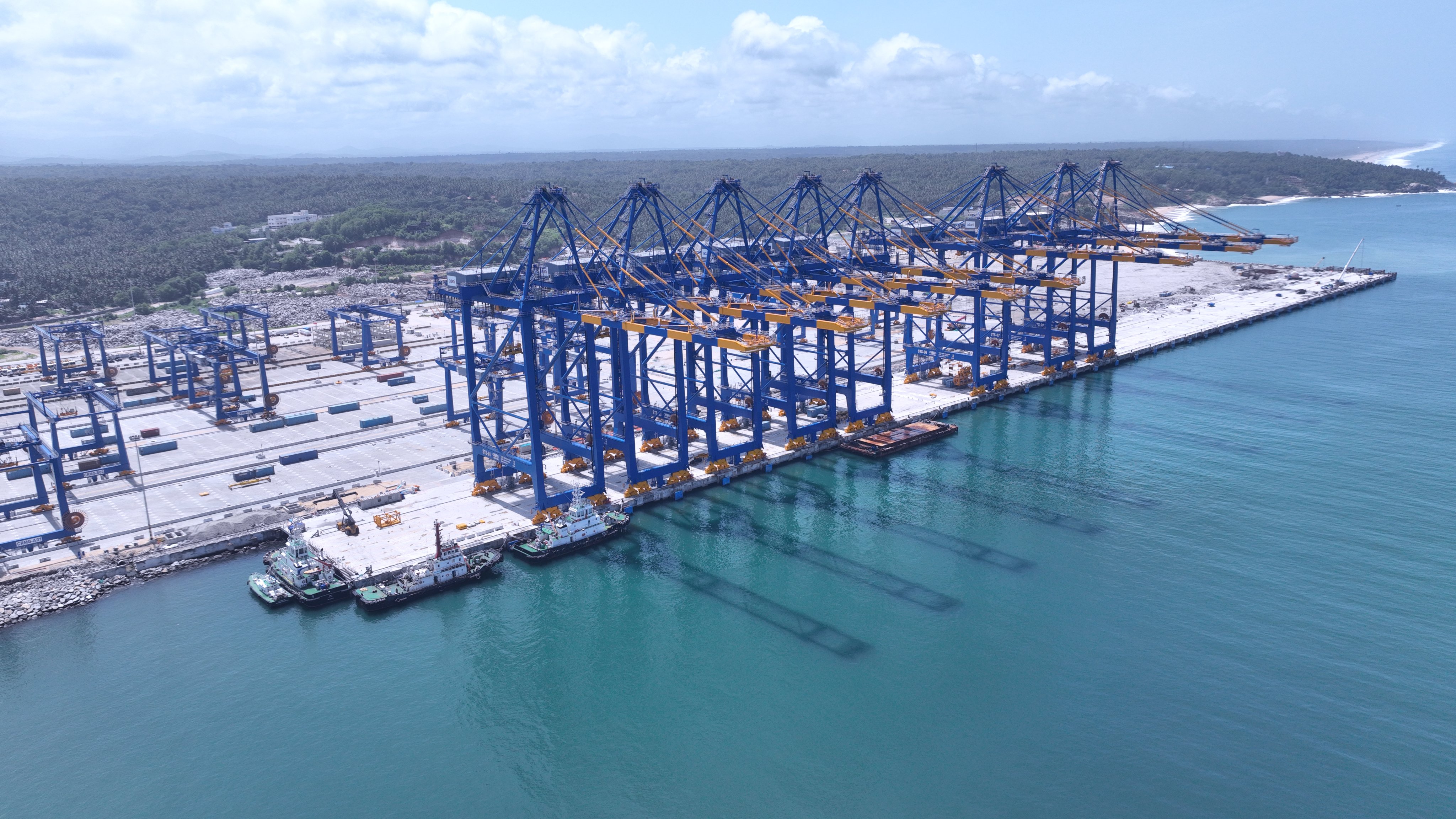
Vizhinjam’s AI-Powered Vessel Traffic Management : A Game Changer for the Shipping Industry
THIRUVANANTHAPURAM : The Vizhinjam International Port, located in Kerala and operated by Adani Ports, is set to transform maritime operations through the integration of state-of-the-art sensor, radar, and artificial intelligence (AI) technologies. Designed to track, coordinate, and manage incoming and outgoing container ships with precision, the port will launch an advanced Vessel Traffic Management System (VTMS) as part of a broader Vessel Traffic Services (VTS) framework. Once fully operational, the system aims to streamline turnaround times, boost capacity, and enhance navigational safety.
The port’s VTMS will rely on a robust network of radar systems, sensors, and AI technology to monitor and manage ship movements. These technologies provide a comprehensive view of vessel traffic by tracking approaching ships in real-time and relaying their precise location and movements to the port’s central control room. Ships within proximity receive navigational updates, enabling optimized berthing assignments and smoother traffic flow within the port, reducing the likelihood of congestion and delays.
A central element of this setup is the AI-driven control room, where data from radar, the Automated Identification System (AIS), CCTV cameras, Radio Direction Finding (RDF), VHF communication, and weather stations are integrated and presented on an electronic chart overlay. This integration allows for efficient management of ship traffic and offers port operators a clear, real-time view of vessel positions and conditions within and near the port. The control room is designed to anticipate and mitigate navigational hazards, providing decision support that can help operators avert potential incidents before they occur.
Given Vizhinjam’s geographical challenges, including susceptibility to swells, the port’s weather-monitoring capabilities include tide gauges and wave and current monitors. These tools provide crucial data to ensure safe operations, especially during high-risk conditions.
During recent trial operations, Vizhinjam Port demonstrated the capabilities of its advanced VTS, managing 29 vessels and handling over 60,000 containers within just one month. This trial showcased the port’s ability to handle large motherships with minimal delays, thanks to the AI-supported infrastructure. Equipped with eight semi-automated ship-to-shore cranes and 23 automatic yard cranes, the port has automated container unloading down to a mere 10 minutes per container, a significant time reduction compared to traditional methods.
This efficiency, achieved through automation and real-time data processing, is expected to position Vizhinjam as a competitive maritime hub capable of handling high volumes of cargo and larger vessels. The port’s upgraded systems not only minimize vessel waiting times but also increase overall port capacity by optimizing ship traffic and resource allocation. “The VTS significantly improves navigational safety, reduces vessel turnaround times, increases port capacity, and strengthens crisis response,” commented a port official.
A standout aspect of Vizhinjam’s modernization lies in its locally developed VTS, a first in India’s port infrastructure history. Developed in partnership with the Indian Institute of Technology Madras (IIT-M) and Maritime Technology Pvt Ltd, the VTS system exemplifies India’s shift toward domestic innovation in high-tech port management solutions. With the Union government’s recent push to promote indigenous technology over costly foreign systems, Vizhinjam International Port’s VTS represents a model for other ports aiming to modernize while reducing dependency on international technology providers.
Vizhinjam’s upgrades align with India’s broader objectives to enhance its maritime infrastructure and reduce port congestion by creating more efficient, technologically advanced ports. The success of the VTMS at Vizhinjam could set a benchmark for similar enhancements in other Indian ports, promoting a new era of operational efficiency and technological resilience across the country’s coastal facilities. As the port’s commissioning date approaches in the next two months, Vizhinjam stands poised to demonstrate the transformative impact of AI, sensor integration, and indigenous innovation on India’s role in global maritime logistics.
